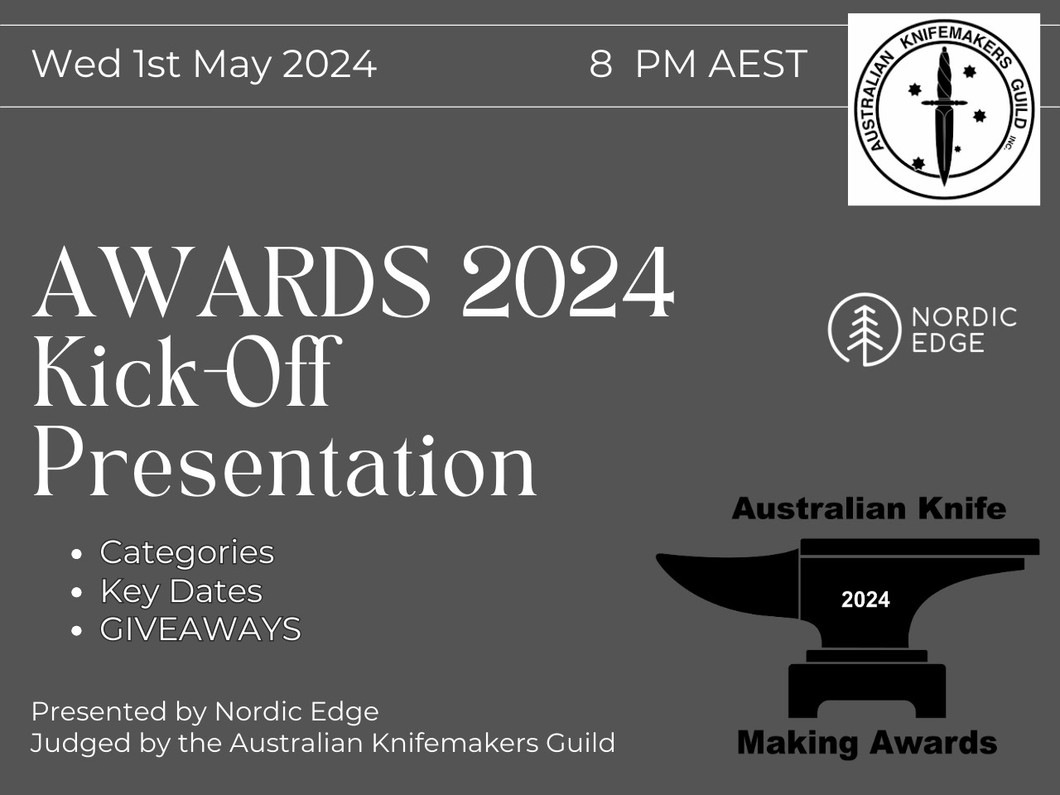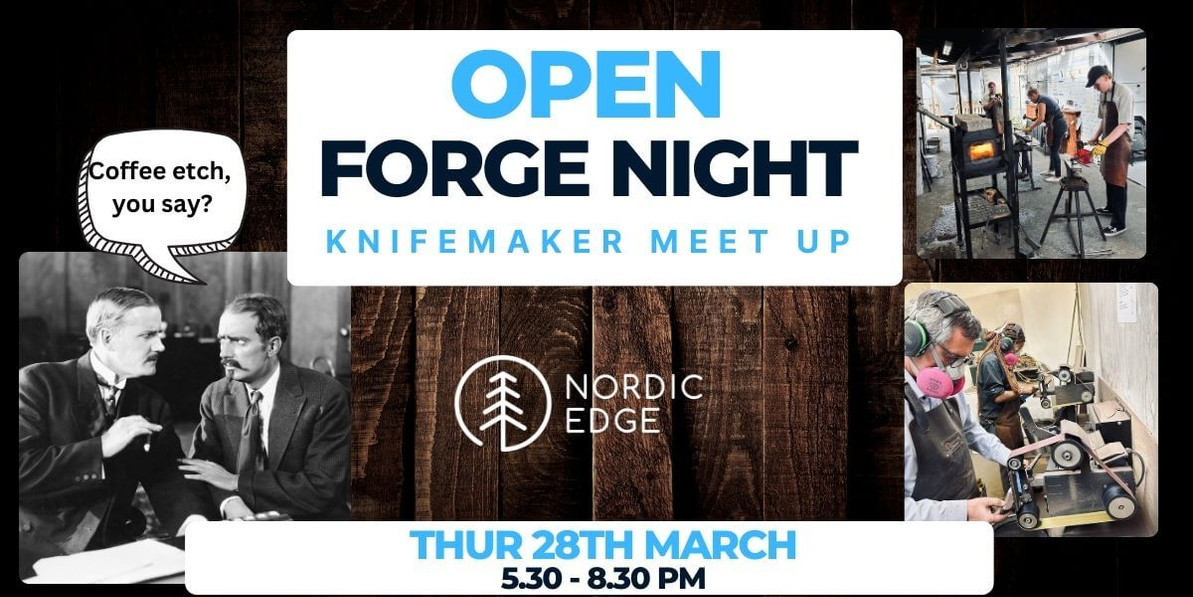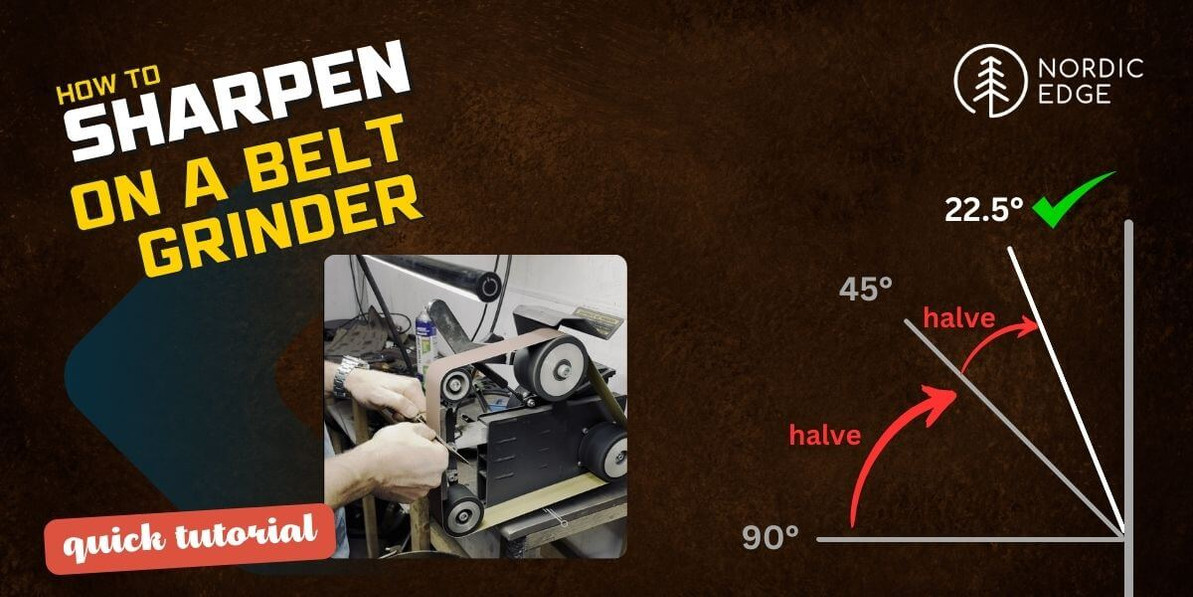Meet The Maker: Jake Summerell, 116 Blades
Meet The Maker – Jake Summerell from 116 Blades
MTM #24 by Bjorn Jacobsen, June 2023
Jake is a maker from Bega, NSW that over the last few years really has made people sit up and take notice of his work. As recent as the Melbourne Knife Show in May 2023 Jake won not one but two awards – Best Forged Knife AND Best Kitchen Knife. At the 2022 QLD Knife Show he took out the coveted Best Damascus Knife.
Jake’s engineering background helps explain his attention to detail visible in the fit and finish, and combined with being a really nice guy, he is one of the makers it is always a pleasure to hang out with at shows. Here is Jake’s story.
Why did you start making knives?
Many years ago, as a birthday present I received a stainless steel Leatherman skeletool. I took it on an overnight fishing trip, and it went rusty (fully aware I didn’t clean it properly). I was so annoyed at the time as I didn’t understand why it got so rusty so quickly, so I started researching the properties of the steel, going down the metallurgy rabbit hole that we probably all have spent a fair bit of time in.
This then led to collecting some moderately expensive folders and fixed blades all of which were right-handed, while I am a lefty. After a while my partner suggested “why don’t you make one yourself that works for you as a lefty. Then at least if you’re making them, you can sell the odd one to pay for the ones you want to keep.” She now regrets that advice at times. I made a couple in the shed with files by myself before a course at Tharwa Valley Forge that was given to me as a birthday gift. From there on its all on Instagram, if you want to follow my maker’s journey:LINK
Bega born and bred
Bega Boy born and bred, I did try a quick stint in the city chasing carpentry apprenticeships but couldn’t afford to make it work at the time. Being a trade qualified fabricator, I spent a lot of my apprenticeship working on bridge repairs and earthmoving machinery which gave me a good variety of work, and exposure to different areas of the trade.
After completing my trade qualifications, I moved into a cadetship where I worked fulltime and effectively studied fulltime as well. Although it was not required to be that intensive, I just wanted to get it done so put in the extra time. I got my bachelor’s degree in civil engineering, then moved into a fulltime design engineer role at council, then onto coordinator of that team for a couple of years. During the coordinator role I decided I wanted to move into more structural based engineering, going back to the original goal of learning how to design bridges so started a Master’s degree in structural engineering.

*Photo credit: Rod Hoare, Knifeimages.art
Starting my own company
For various reasons I felt I had reached the ceiling of my professional career at council and decided to quit and start my own engineering consultancy JSA Engineering Solutions Pty Ltd, which has led me to working with the same consultants that I was working with whilst at council just now in the private sector on different projects which has been a breath of fresh air.
It’s pretty busy at the moment with work, studying and everything else going on but I am enjoying learning more both in my trade and as a maker.
The couple of hundred first knives
Since starting out I have maybe completed a couple of hundred by now, not really been keeping track. I went through a phase of just smashing out belt finished knives to get them into as many people’s hands as I could for feedback and didn’t really keep track of numbers. Currently I’m lucky if I can finish 20 knives per year, but they each tend to take more time now as I am finding my style and the level of fit and finish that I am happy with takes longer to achieve.
Stick tang in the kitchen – full tang outdoors
For kitchen knives I prefer to make hidden tang knives, both from a weight/balance point of view but also that it limits the contact between the user’s hand and the steel. To me this makes sense, especially as I often use carbon steel for kitchen knives and by only exposing the blade to food and regular washing, I find they hold up well. There are of course exceptions and other factors at play like blade weight and overall balance, but I often prefer a hidden tang construction in the kitchen.
Whereas for the outdoor hunting/camp knives I like the added security and durability of the full tang construction. This provides a stronger knife, as well as saves me fitting up metal guards!

*Photo credit: Rod Hoare, Knifeimages.art
My favourite style of knives
I focus more on the culinary side of knife making these days as my interests and skills have developed over time. The fact that everyone uses a kitchen knife opens a wider range of customers than just doing hunting and camping knives. This has also resulted in more feedback and satisfaction from customers, reinforcing that I should focus on what I prefer to make.
My favourite knife to make is the simple brute dé forge mono-steel Western style chef’s knife. I just find this the most aesthetically pleasing and function profile for what I do in the kitchen. It is a very efficient style in the forging process, where I have found my own repeatable procedure. Making a quality product in mono-steel also makes it a bit more budget friendly than my Damascus steel blades, providing an opportunity for more people to get their hands on a custom-made knife, which is a bonus.
Is there an aspect of making you find difficult or frustrating?
Hand sanding plunge lines is not one of my favourite steps, hence why most of knives don’t have plunge lines. I enjoy making the knives that I make, and happy to create the style and finish I am doing right now. Part of that finding my own style is also being selective about what I do and do not want in my knives. Finding your own style is part of the fun and this will be impacted by the style of knife you prefer to use, and the techniques you enjoy more.
What is the most rewarding moment of every build?
Oiling the timber handles then ripping the tape off the blade to reveal the finished product, is the most rewarding moment for me as a maker. Making a knife takes a lot of time. It is very satisfying as a maker to finally see the result when the handle is sanded and oiled, and the knife is completed.
Do you have any favourite steels?
1075 or 1084, simple forgiving steel that performs well and is easy to work with. They are very versatile steels and can be used for both culinary and outdoor knives with varied heat treat procedures. Being good at one steel can deliver a better knife than jumping from steel to steel in my experience, and I am happy to take the time needed to learn to get the most I can out of the steels I use. I also make Damascus steel with the added complexity of pattern design and working to really bring out the contrast in the finished steel, #steelbyjake.

*Photo credit: Rod Hoare, Knifeimages.art
Favourite handle materials – wood or synthetics?
I do really like g10 for its durability but hate working with it due to the dust, and how bad that is for you and the shop. My favourite handle material is a tie between two hardwoods; Ringed gidgee and Arizona Ironwood, both incredibly hard and tough natural timbers that just pop once hand sanded and oiled.
My knife making goals
I want to learn as much as I can from talented makers and produce quality work I can be proud of. I’m currently working through the levels of ABS and hopefully testing for JS in the coming years. Another big goal in the 5-year plan is to learn how to make folding knives, not for sale but for myself and close friends as something a little bit different from what I normally make. It is important to me to keep learning and pushing myself, this keeps me interested and wanting to learn more.
Knife making is a stress release
For me knife making is stress release, going out and swinging a hammer to make something is far more satisfying than swinging the hammer to break stuff. I work long hours and life can be pretty full-on sometimes, having the opportunity to make something is a great way to recharge the batteries.
I also think it is about as efficiently using the resources we have available to us, producing a quality product in a throw-away society. We only have a finite number of resources on this planet and need to learn how to use them better. Part of the reason I enjoy forging so much over stock removal is the fact that it is better use of materials.
From a length of steel, I can cut my blanks so there is no wastage other than the thickness of the cut-off wheel. I can forge my blade and bevels, needing less grinding and make an affordable product with minimal wastage. To my mind the result is worth it. A hand-made, well-performing knife for everyday use. That’s probably what drives the “softer side” of knife making for me, without being an overly sentimental person.

Social aspect of being part of the maker community
I have been lucky in that almost everyone I have spoken to in the knifemaking community are genuinely really nice people. I go to shows more so to socialise with other makers than to sell knives, selling knives is the bonus. The fact that makers freely share their knowledge means I can learn from others, as well as pass on some of my own lessons to those interested.
I’d say I’m really good mates with a few people I have met through the knife making community, I go to BBQs, family gatherings and now more non-knifemaking outings than knifemaking outings with several of them.
I have done a few hammer-ins but am always keen for more. Any excuse to get away from the computer and go travelling for a weekend is always a good thing, in my books.

*Photo credit: Rod Hoare, Knifeimages.art
Makers who helped me on my way
There’s been quite a few people who have helped and inspired me through my knife making learnings. Karim Haddad who really helped me early on and pointed me in the right directions when I was asking question, and from the business side of things when getting ready for shows.
Iain Hamilton has also been a big help, from letting me use his shop when I was still getting tooled up and on the finer points of forging.
More recently I have also had a lot of help from Ian Stewart and Adam Fromholtz, in regard to refining my designs and really pushing me in the fit and finish area. Adam’s creativity with pushing materials and processes to the limits has also driven me to try things people have said you can’t do without a full-blown industrial setup. Along with some of the more famous makers on Instagram, I do grab a fair bit aesthetic inspiration from people like Curtis Haaland of Freehill blades, Jason Knight, Sean Alonzo and Niko Nicolaides just to name a few.
And my partner of course, being patient with my making and allowing me the time to keep doing it. We enjoy cooking and camping together and have also done some workshops to learn a few new things in the kitchen.

3 tips for makers starting out
- 1)Do a class, learn how to troubleshoot your issues, youtube isn’t the gospel… It will save you so much time and allow you to spend that time on what you enjoy doing.
- 2)If you are getting into selling, use known steels and heat-treating regimes. Nothing wrong playing around with files and leaf springs but unless you’re getting them properly tested you can’t guarantee what they are or if you’ve heat treated them properly. People paying good money for knives want to know exactly what they are getting. This might be a controversial point for some makers but the steel is the cheapest part of the knife, why scrimp on it.
- 3)Don’t rush, learn the basics first and do them well. Clean lines, clean finishes, good fit, good performance then start playing around with mammoth ivory, ebony, Damascus, and super stainless steels. A shit knife made from expensive materials is still a shit knife, to not put a too fine point on it. Give yourself time to learn and find your rhythm, before adding the expensive materials.
Thank you for sharing your story with us, Jake!
For anyone wanting to get in touch or to check out Jake’s work, here is his Instagram profile: LINK
Recent Posts
-
AWARDS 2024 Kick-Off Presentation Slides
The Australian Knife Making Awards are back for 2024!Wed 1st of May 8 PM AEST your hosts this year R …2nd May 2024 -
OPEN FORGE NIGHT Thursday 28th March 2024
Come along to a knife maker meetup at Nordic Edge!Thursday 28th of March 2024 - 5.30 - 8.30 PMForges …27th Mar 2024 -
How to: Sharpen on a belt grinder
By Bjorn Jacobsen, March 2024"A Sharp Knife is a Safe Knife"Knife sharpening is part of using knive …26th Mar 2024




